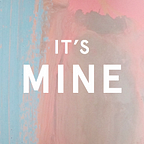Bernar Venet
“I always dreamed to live surrounded by art. To bring my bed into a major modern art museum and have it moved to different rooms each day would give me a lot of satisfaction.”
Do you remember your first encounter with art?
I was 11 years old and I discovered a book with a painting reproduction and a strange name that was totally meaningless to me: “Renoir”. It was quickly explained to me that this was the name of a famous artist, exhibited in museums, collected all around the world, and many books were written on him. That day I started to dream…
When did your interest in art begin?
From that same day, my mother started to buy me all the books that she could find related to art.
How did you start out as an artist?
I started to paint oil paintings on canvas or board when I was 11. Since then I never stopped. But it’s only at the age of 18 that I produced artworks that are occasionally included in my retrospective exhibitions.
Are you interested in the art scene? Do you often visit galleries and museums in your free time?
I did a lot more than I do now, because I work a lot more than I did when I was young. And I will say that there is urgency now, to do myself something worthwhile.
Over your career, would you say that your work has had any common denominators? Theme, genre, technique?
My work has evolved using different media, including tar, cardboard, canvas, wood, steel, and also different disciplines like painting, sculpture, performance, photography, poetry or music. Retrospectively it has become obvious that this is all of the same nature, all related to a similar conceptual matrix.
What is the driving force behind your work?
A lot of energy, doubts about what I have done and the hope to do something interesting someday…
How do you decide what do to next?
We don’t really decide. Intuition, deduction and accidents help us to find ways to get moving.
Do you buy art yourself? If so, what makes you select a certain piece over another?
I do buy art because I hate to exchange my works for money, so, acquiring other artworks seems to relieve me from that suffering…
What role does art have in your everyday life?
I always dreamed to live surrounded by art. To bring my bed into a major modern art museum and have it moved to different rooms each day would give me a lot of satisfaction.
“The concept of art is an open one — we have to constantly be prepared for new creations, new entities which will contribute to extending this category called aesthetics.”
Can art create happiness, you believe?
Definitely — creation and beauty certainly have a positive influence on your spirit.
How did you come across Wetterling? Please, describe your relationship.
I met Björn the first time in Singapore in 1995 or 1996. He had a very large gallery, showing great art mainly from American artists. But he was there too early… Singapore was not ready. We became good friends some years later when he visited me in New York, and we started to work together in Sweden a few years afterwards.
Do you ever meet or socialize with other artists?
Not enough. We all work a lot and travel too much. But of course we meet once in a while. Unfortunately many of my best friends from the 60s are all gone, and I don’t know so many younger artists.
Can you, in one sentence, summerise what art means to you?
The concept of art is an open one — we have to constantly be prepared for new creations, new entities which will contribute to extending this category called aesthetics.
The paradox is that in order to make art one must each time move beyond the domain of art. For those who believe that they can define what art is and what its goals are, I would like to remind them that, as philosophy teaches us, “the world is intrinsically devoid of meaning, foundation and finality,” so how could it be any different for art?
Text: Q&A
Photo: Patrik Sehlstedt
© Wetterling Gallery
